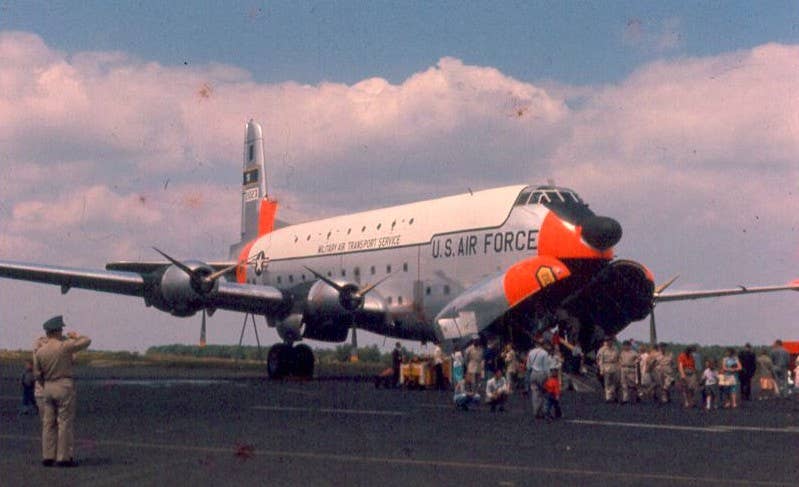
The size of the C-124 is impressive as it was designed to carry military gear such as tanks and trucks without disassembling them. Museum of the US Air Force
Sometimes an aircraft, especially a military aircraft, is a touchstone for families. It doesn’t matter if the loved one was the pilot of the airplane or even a member of the flight crew. What matters is that they have a fond memory of the airplane, and when they share it with their family, the airplane becomes part of their family story. These airplanes are an anchor point in history and help bring us closer to our loved ones—especially after they have gone west.
Nate Wilburn, of Great Falls, Montana, is an A&P technician with a fondness for the C-124 because of stories his father told him. His father, Claude “Willie” Wilburn, served in the U.S. Marine Corps from 1953 to 1957 and in the U.S. Army from 1957 to 1960. According to Nate, his father’s jobs kept him on the ground, but like so many servicemen of the time’ he traveled to and from assignments aboard the C-124.
“The Mount Fuji story is the one I remember the best,” Nate says. “He was in the Army and got a ride from Japan to Korea in a 124. Would have been in the 1957 to 1958 time period. He shot up a roll of photos on a new 35mm camera he bought in Japan. When he got ready to get them developed, he found out the film hadn’t advanced in the camera, and he shot up multiple exposures of Mount Fuji on one frame.”
There is something magical about seeing these airplanes on the ground, and getting up close to them. You can’t help but think about your family member, especially if you happen to be the same age they were—or close to it—when they were aboard the aircraft.
This struck home for the younger Wilburn in April 1987 when he took a trip to the Pima Air and Space Museum in Arizona and saw the C-124C on display.
The size of the airplane is impressive as it was designed to carry military gear such as tanks and trucks without disassembling them. Before the C-5 came on line, the C-124 was the largest cargo aircraft the U.S. had in its arsenal. A total of 447 of them were built. The aircraft earned the name “Old Shaky” because it was a troop carrier and was unpressurized, which meant that if it encountered weather during the flight it usually had to fly through it rather than climb over it. If there was turbulence, the crew and passengers felt it.
Nate notes he could not help but think about his father as he looked at the airplane, and was careful to take photographs to share with him.
“I wandered around that museum for hours. Back then, I had to ration photos. A box of four rolls of 24 exposures was pretty pricey, and then the price of getting them developed added to the cost. I saw that Globemaster II and thought of Dad telling me about riding on one. I had to capture a couple shots to take home to show him. What I thought of that day was, I wish he would have been there with me to wander the museum lot.”
In 2002, the Wilburn men took a trip together to Hill Air Force Base in Ogden, Utah, where Hill Aerospace Museum has a C-124C Globemaster II on display.
“He really had a great time reminiscing while walking around their C-124,” says Nate. “Dad had one ride that I know of. He never forgot it. He had a special place in his heart for them after that all his life.”
Nate’s father is gone now. He flew west on July 4, 2007—a fitting date for final flight by a patriotic Marine, his son notes, adding that aviation will forever remind him of his father, as it was he who nurtured his son’s interest.
“Dad loved aviation,” says Nate. “Although he never made a living in it, he still loved it. He is the reason I fell in love with aircraft and aviation.”

Sign-up for newsletters & special offers!
Get the latest FLYING stories & special offers delivered directly to your inbox






